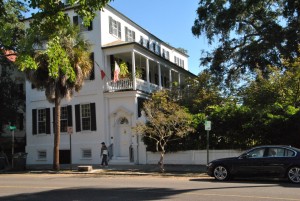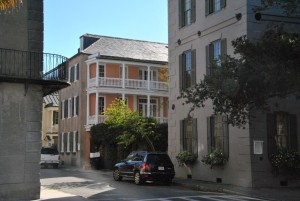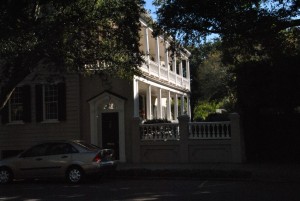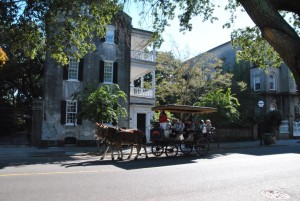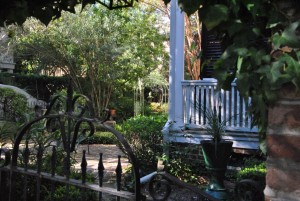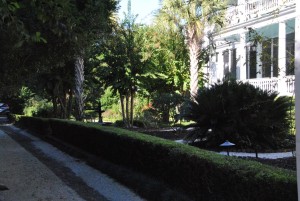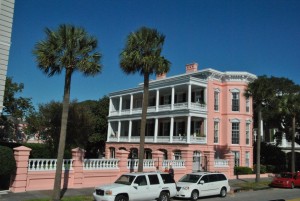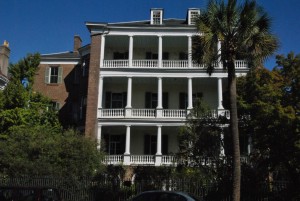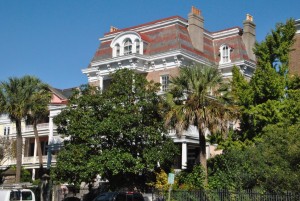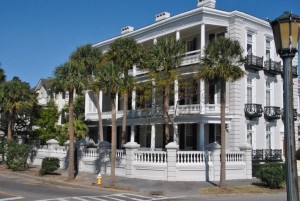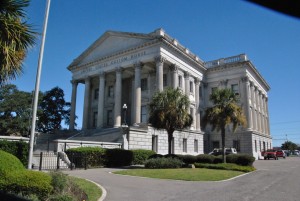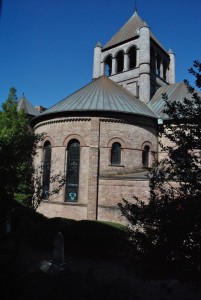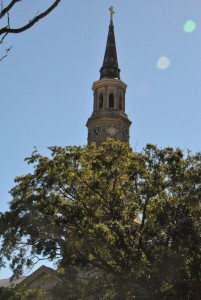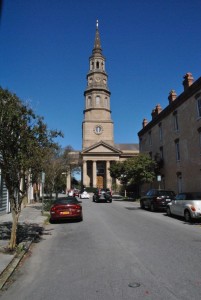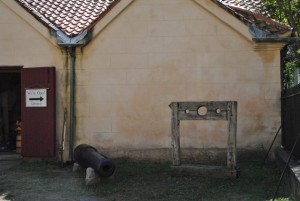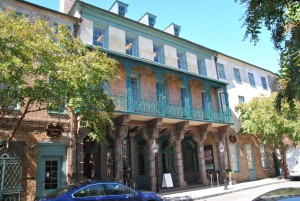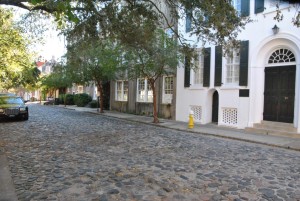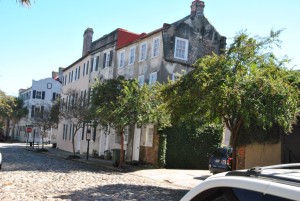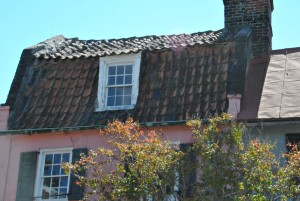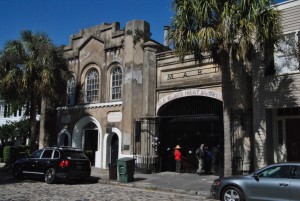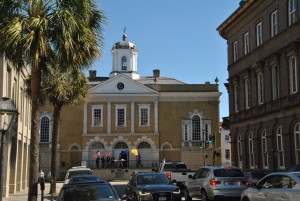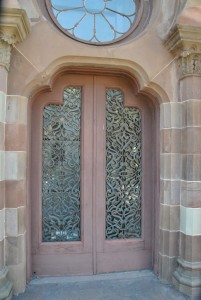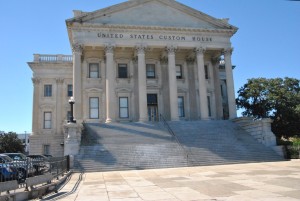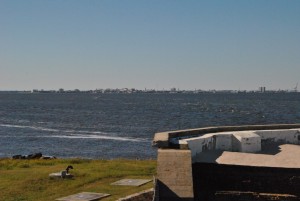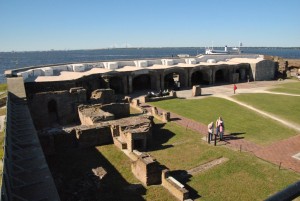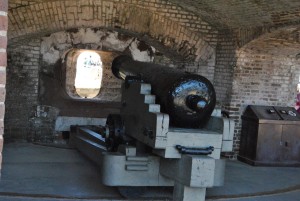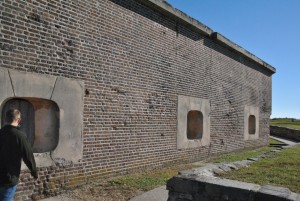Charleston, SC
October 19, 2015
After a delightful (but expensive) day at Magnolia Gardens on Sunday, we decided to forgo the guided tours of Charleston for a self-guided tour available from ExploreCharleston.net.
Charleston has the largest & most beautiful, well kept collection of historic homes that I have ever seen anywhere!
The tour started with the “Four Corners of the Law” at the intersection of Broad Street and Meeting Street. This is reportedly the only place in the world where these four aspects of the law occupy the four corners of the intersection. St. Michael’s Church: God’s law; Post office: Federal Law; Courthouse: State Law; and City Hall: Local Law.
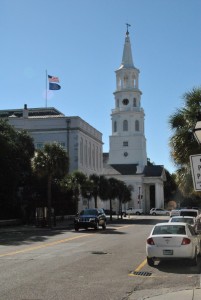
Many of the homes are of the “Charleston Single House” design. They are only one room deep with a large veranda always oriented toward the harbor. This gave the advantage of allowing the sea breeze from the harbor to flow unimpeded into every room of the house! A great solution for those hot South Carolina days before air conditioning!
Many homes had delightful private gardens that could be glimpsed from the sidewalk.
Along the Battery and overlooking the harbor are many spectacular mansions. It was from one of these homes that General P.G.T Beauregard gave the command to fire upon Fort Sumter — the first shots of the Civil War.
While one often associates Charleston, and South Carolina in general, with the Civil War; one should not forget that Charleston played an important role in the American Revolution. In fact, we learned that South Carolina actually declared its independence from Britain in March of 1776 – four months before the Declaration of Independence was signed! And it was the second state to ratify the U.S. Constitution in 1788. Among the many historic buildings, this is where SC voted to ratify the new constitution.
Charleston also has many historic churches. Of course there is St. Michael’s church at the Four Corners of the Law. Here is the Circular Congregational Church, founded in 1671. It’s attached graveyard includes many very old and often poignant grave markers.
Perhaps the most famous is St. Philips Episcopal Church, the oldest congregation in the State of South Carolina. The foundation of the steeple is actually in the middle of Church Street, which curves around the steeple. The church was built this way so that even if you were not a believer, when you rode your carriage down Church Street you had to acknowledge the presence of God.
And just down Church Street is the French Huguenot Church. another strikingly beautiful church.
Other historic and interesting buildings were the Powder Magazine where gun powder & weapons were stored in pre-revolutionary times, the oldest surviving structure in Charleston, and the Dock Street Theater, which claims to be America’s first theater.
Chalmers Street is one of the few remaining streets with the original cobblestone paving. The pink #17 Chalmers Street is one of the oldest surviving homes in Charleston, built in the early 1700’s. Across the street is the German Fire Hall and the Old Slave Mart
The Old Exchange and Provost’s Dungeon is probably the most historically important building in all of Charleston, and perhaps one of the most important colonial-era buildings in all of the US. This is one of only three surviving buildings from which the Declaration of Independence was read. It has been used as the customs house, as a public meeting house, as a post office, and as a dungeon. Tea was stored in the Dungeon in protest of taxes during colonial times, in what can only be referred to as Charleston’s own version of the Boston Tea Party. Both pirates and Revolutionary criminals were held in the dungeon. . Following the defeat of the British in the American Revolution, George Washington was entertained here at a grand gala held in the third floor dance hall.
Other historic buildings include the old Farmers and Exchange Bank with its ornate cut-glass windows and doors, and the U.S. Custom House which overlooks the Charleston harbor like a guard on constant watch.
We ate lunch at the Southend Brewery & Smokehouse. They had a handwritten sign saying “2015 Tastiest Shrimp & Grits in Charleston”. Well, WE didn’t know what shrimp & grits is, but I knew that I didn’t like the hominy grits my mother used to make. Well, we asked about the sign & the dish — Southend had won a city-wide competition, so Judith decided to order them! (I on the other hand was too chicken & ordered She-Crab Soup.) Both were absolutely delicious! The shrimp was prepared in a creamy sauce with ham pieces over grits … She loved it & I certainly enjoyed the one little bite I received!
The service was first rate as well. It proved to be even better when, four hours later, we discovered that I had left our credit card when I signed the bill. (We were buying chocolate chip cookies at the time!) We called, they were holding it for us, we picked it up and all was well.
Fort Sumter is about 3 1/2 miles out into the harbor from the city, and it is only accessible by a half-hour boat ride. Along the way we had good views of the Ravenel Bridge and the USS Yorktown, which is moored in Charleston harbor.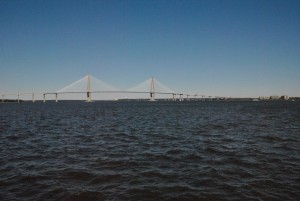
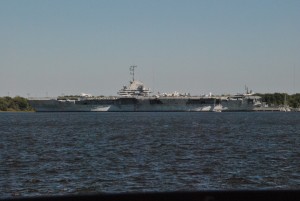
Fort Sumter was designed following the War of 1812, and was to accommodate 650 soldiers and 135 artillery pieces. However, in 1860 the fort was still not complete, nor was it manned. Major Robert Anderson and two companies of Federal troops were stationed at Fort Moultrie, a dilapidated fortification facing the coastline. Anderson recognized that his position was vulnerable to land assault from Confederate forces and he elected to abandon it for the more easily defensible Fort Sumter on December 26, 1860. Confederate forces then controlled all of the other forts in the Charleston harbor, while the 86 Federal soldiers with their 16 cannon occupied the island fort. The first shots of the Civil War were fired by Confederate troops onto Fort Sumter, with the barrage lasting 34 hours and over 3000 Confederate shots fired upon the fort. Amazingly, no one from either side was killed in the battle – although two federal soldiers were killed in a cannon mishap during the surrender ceremony.
